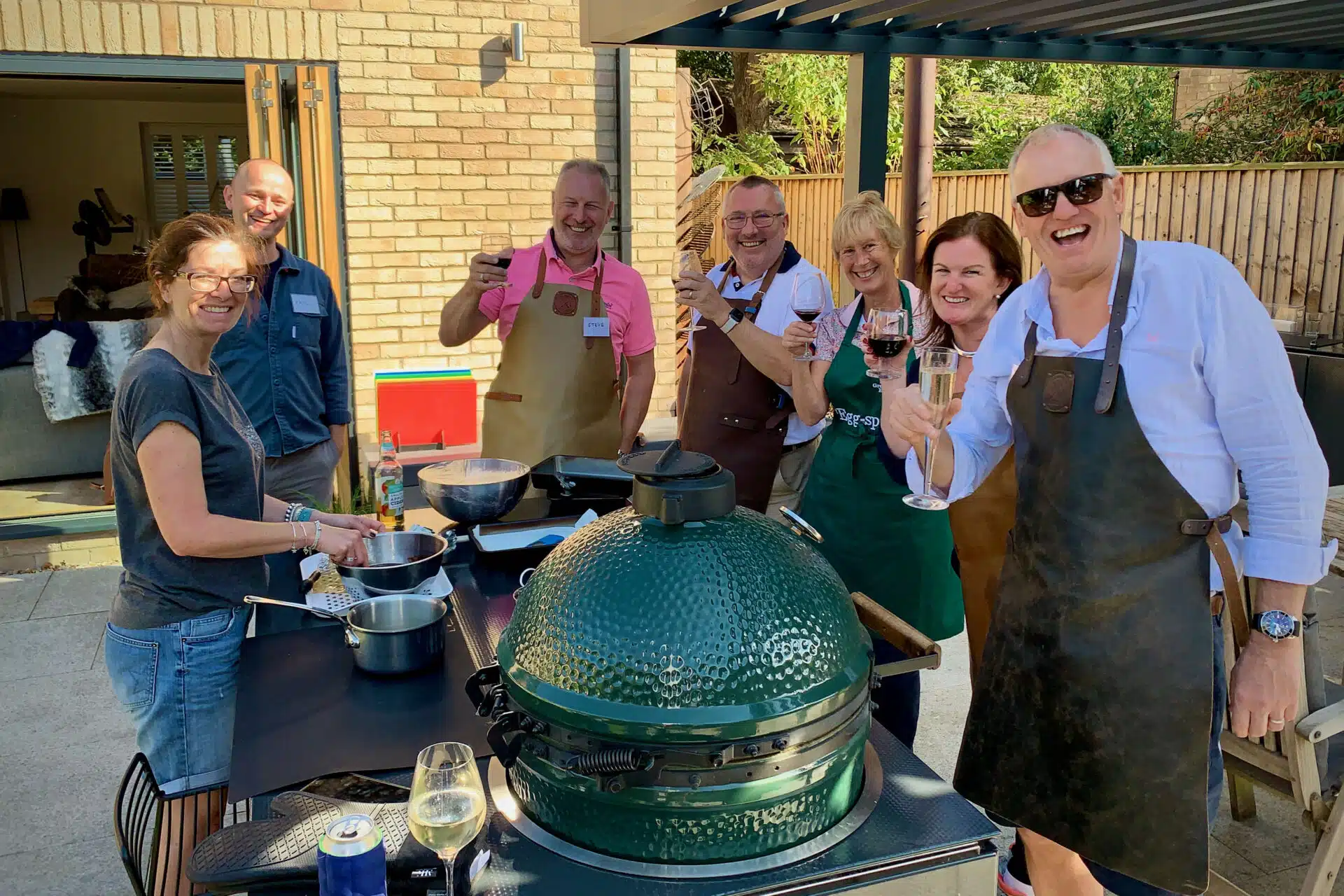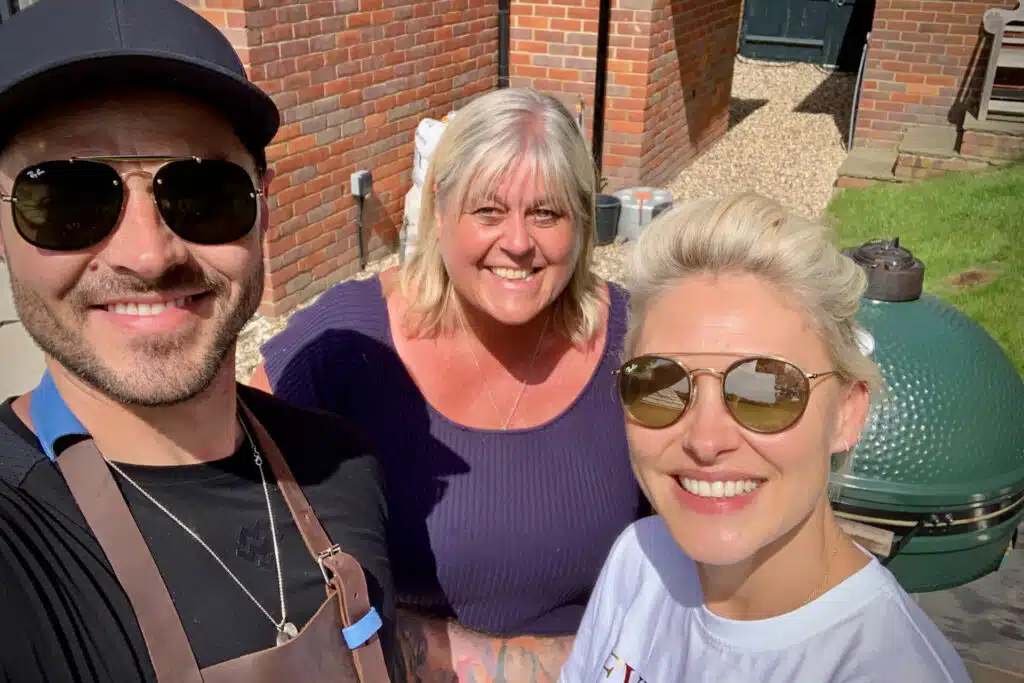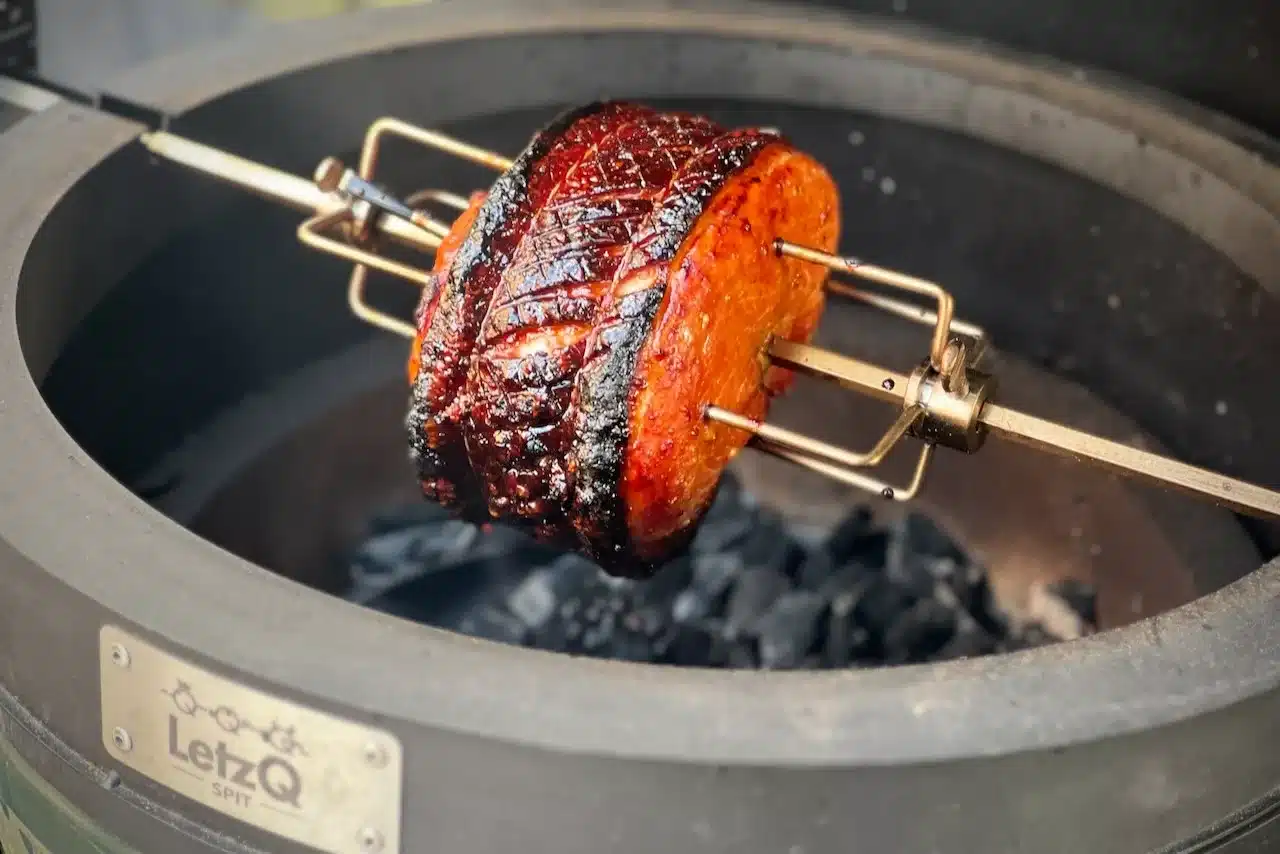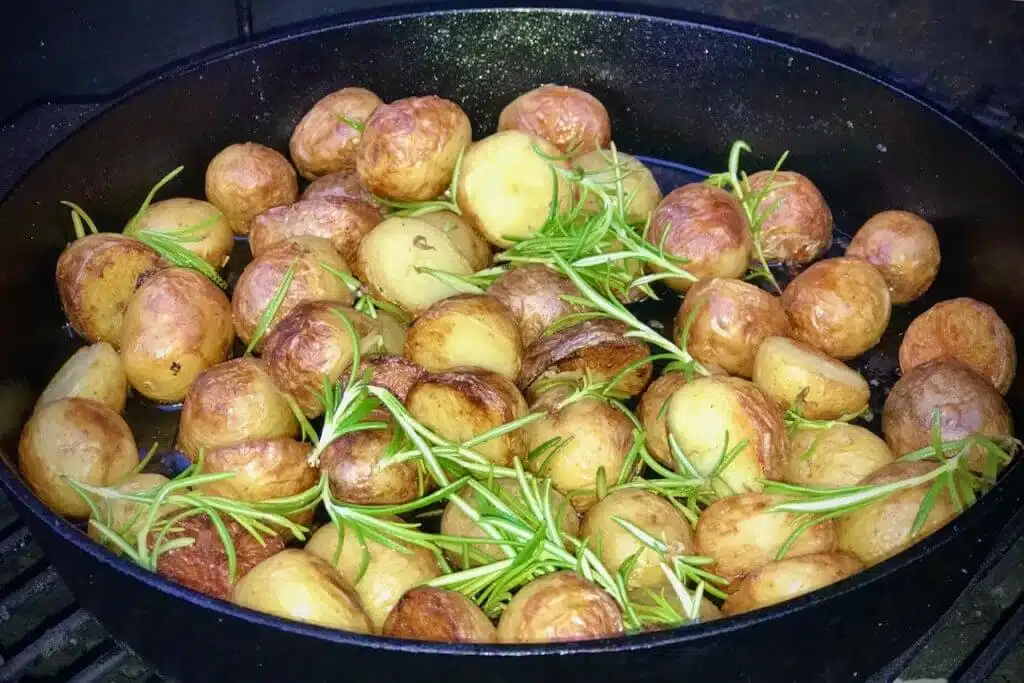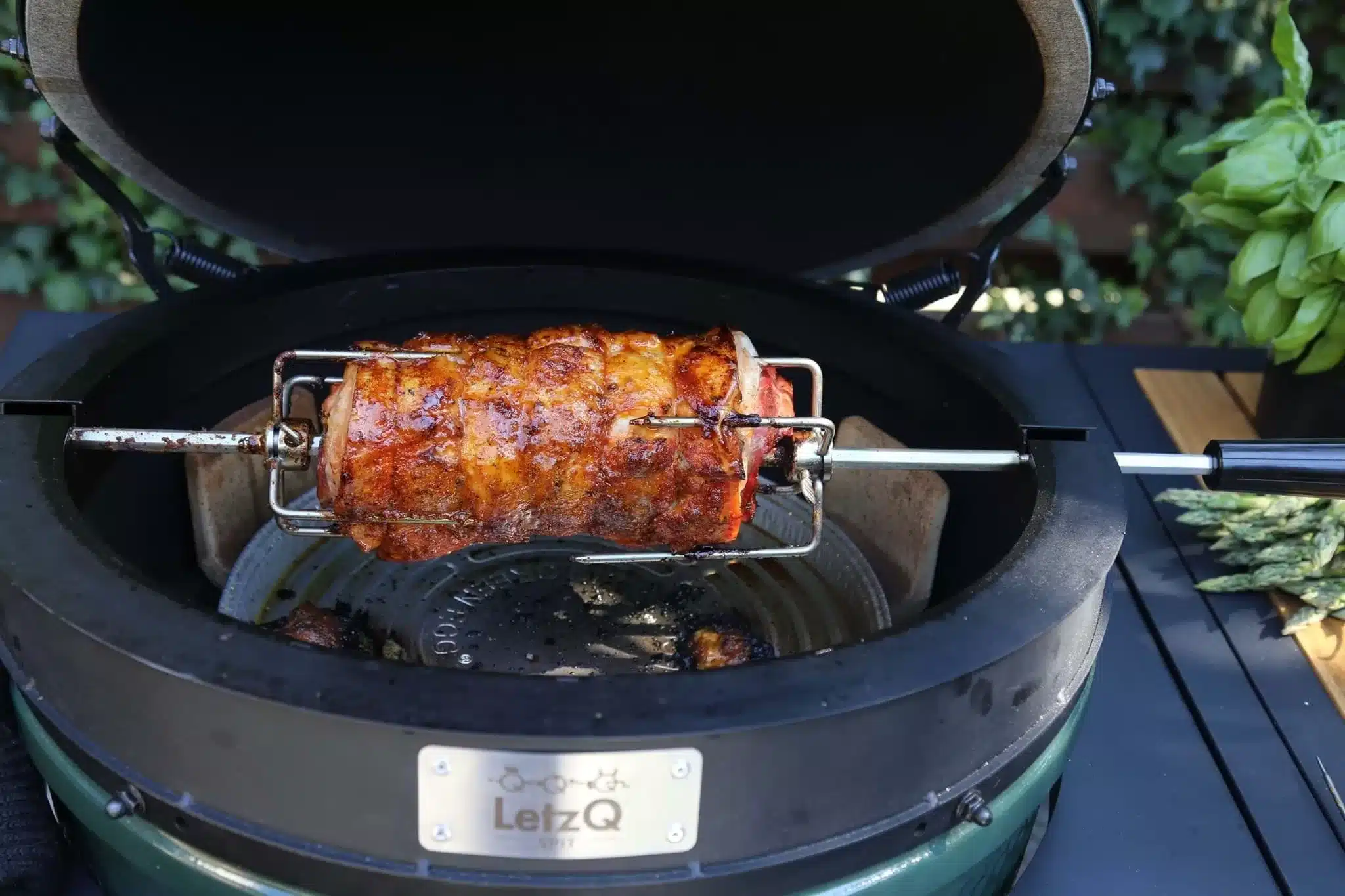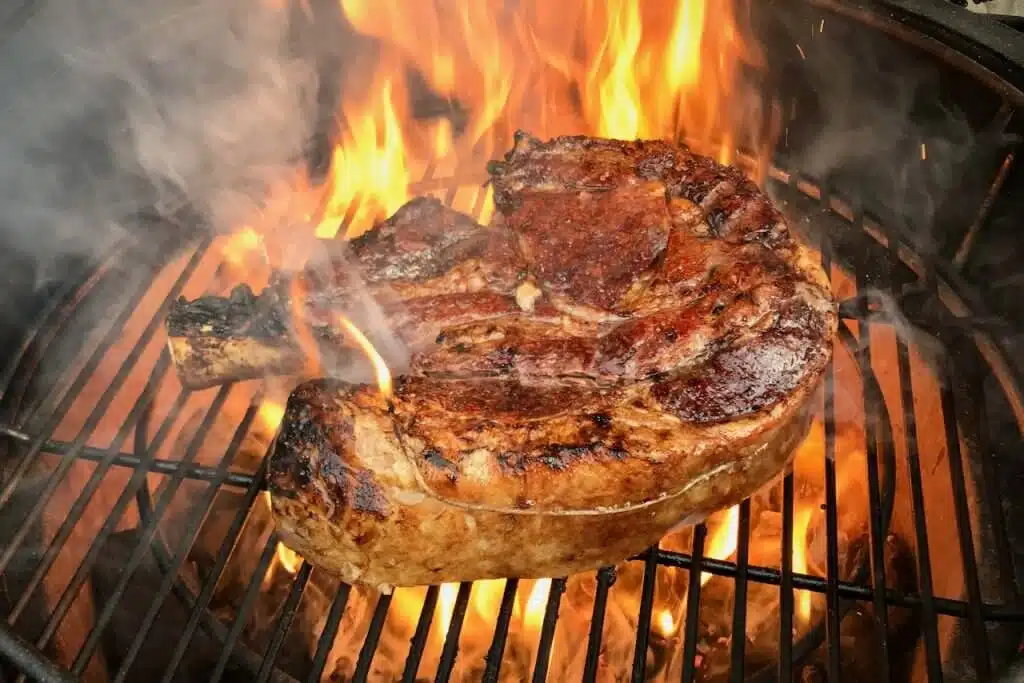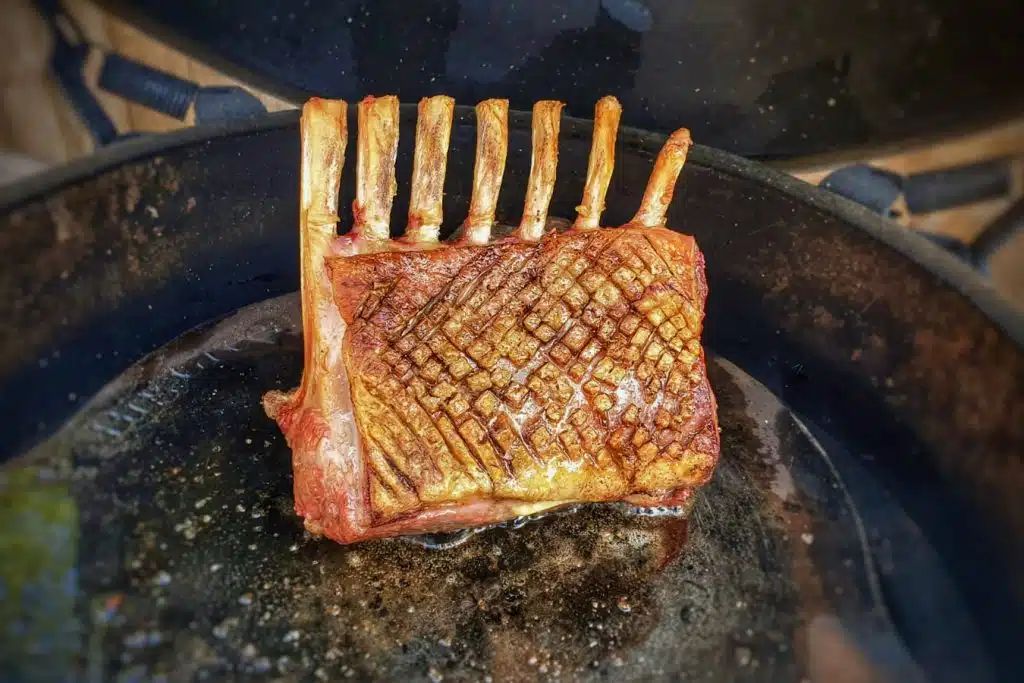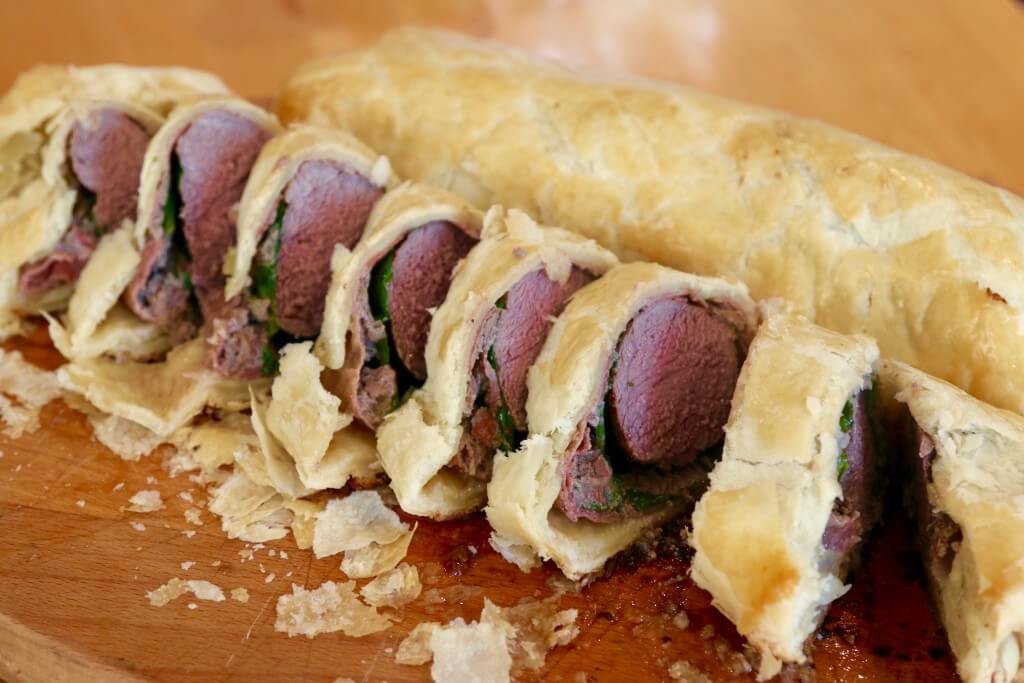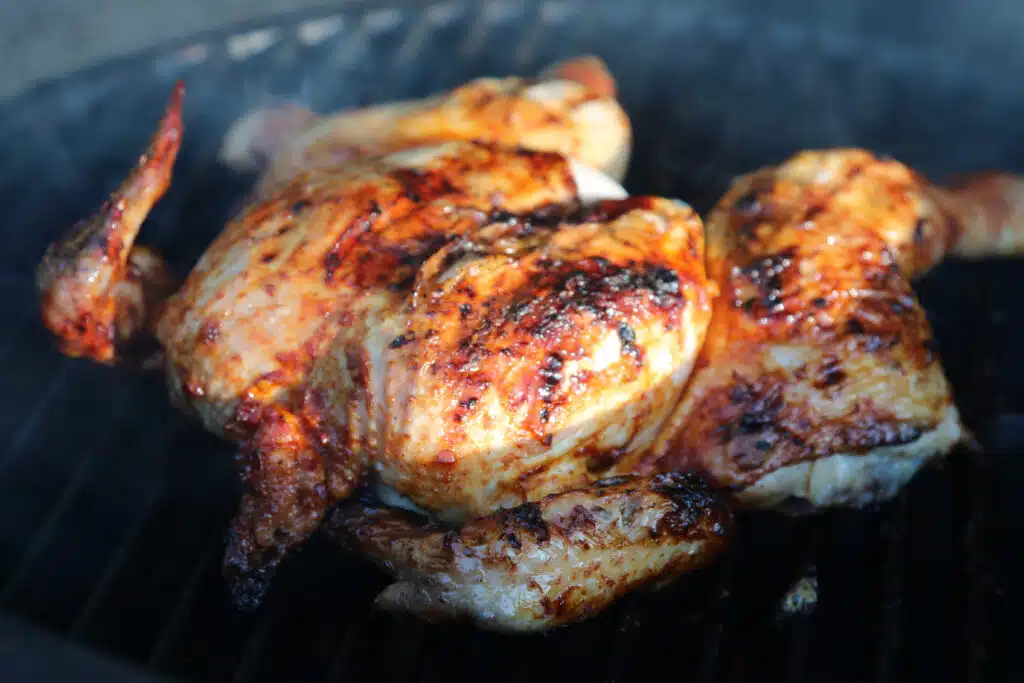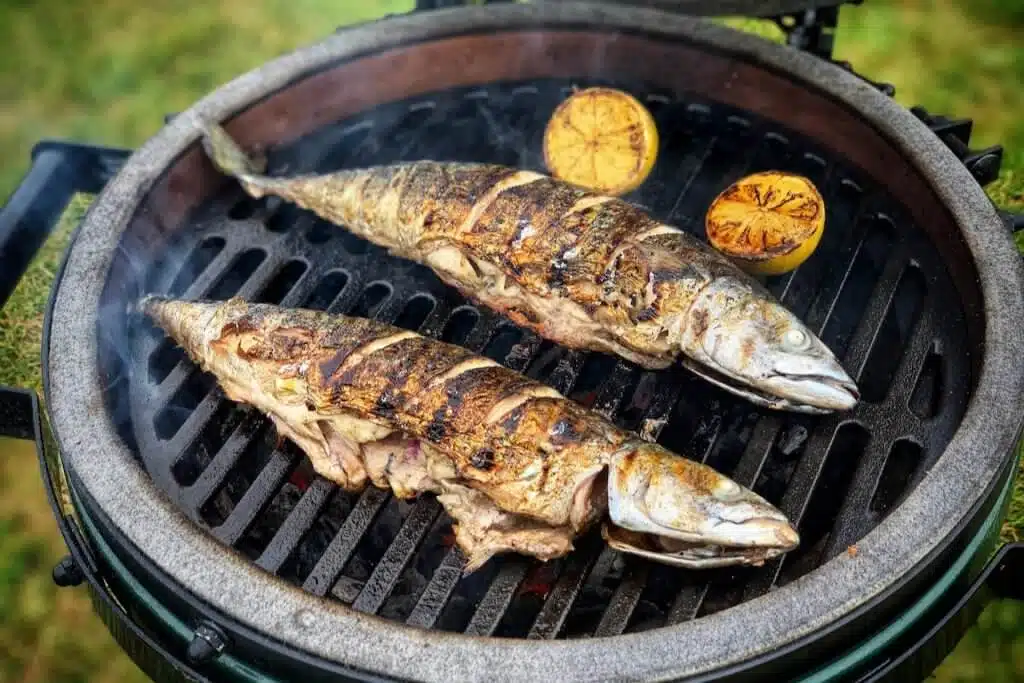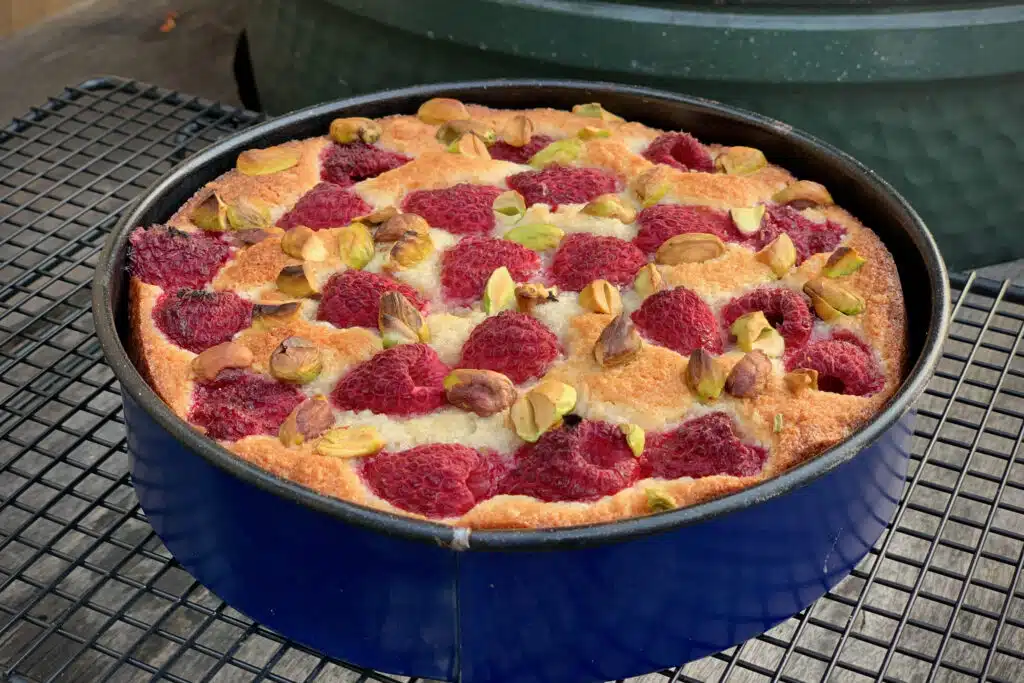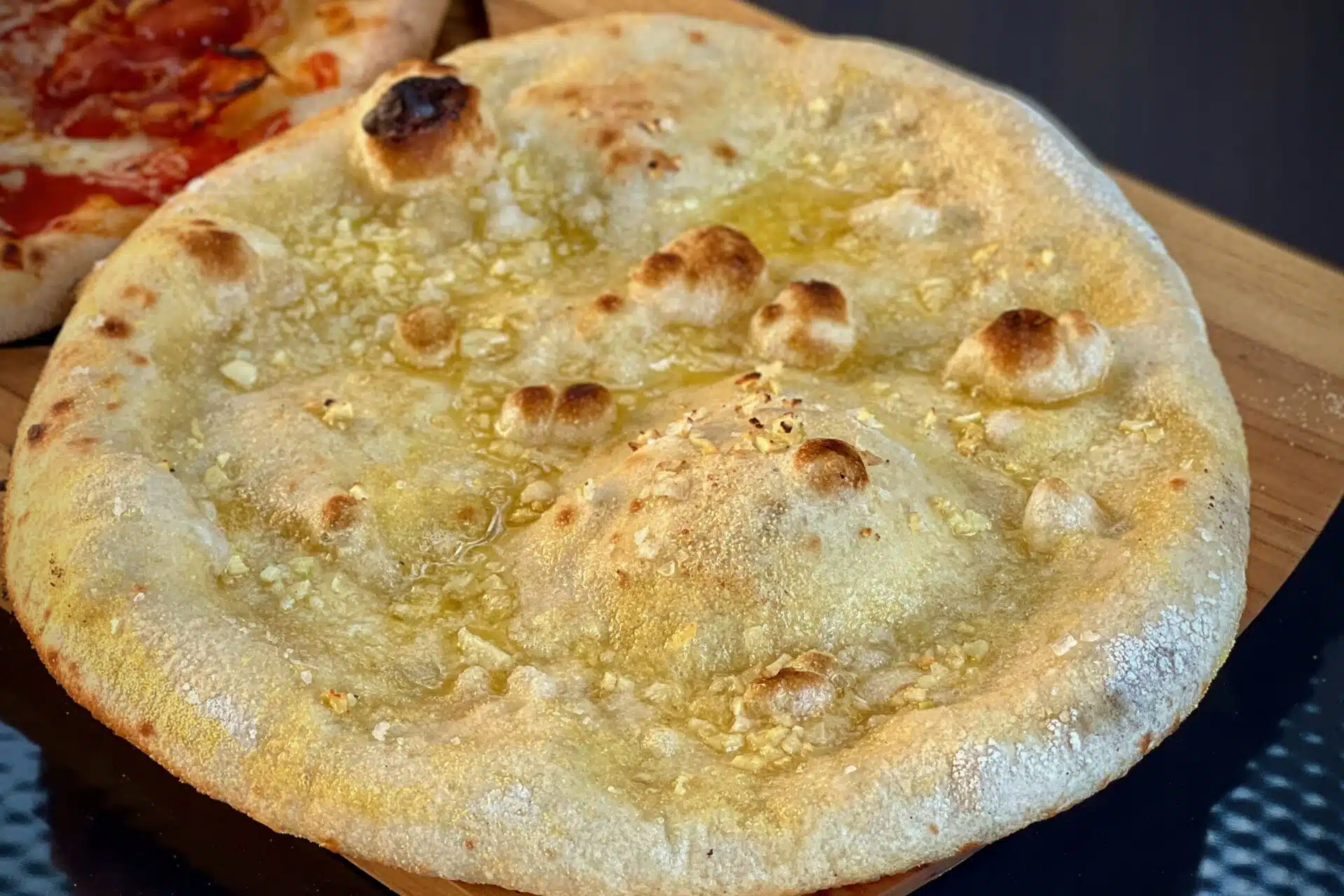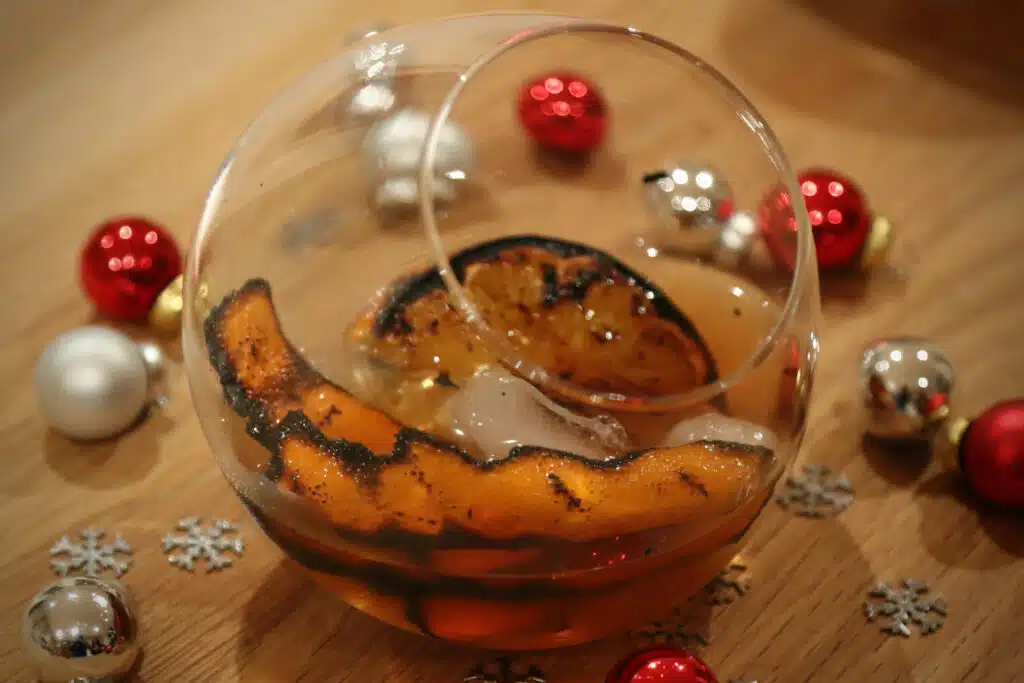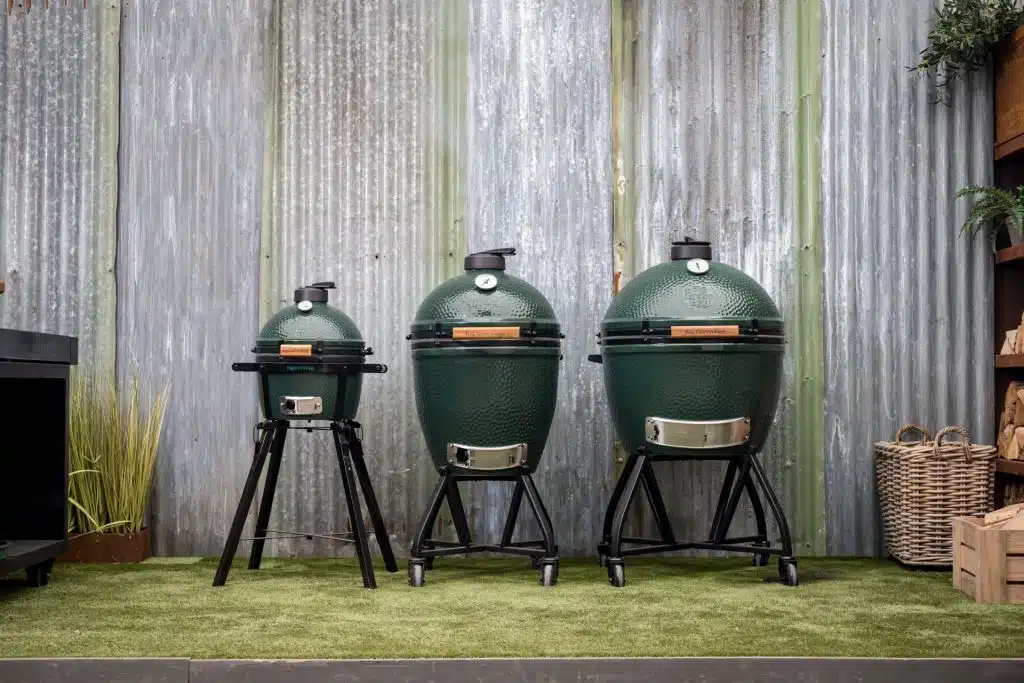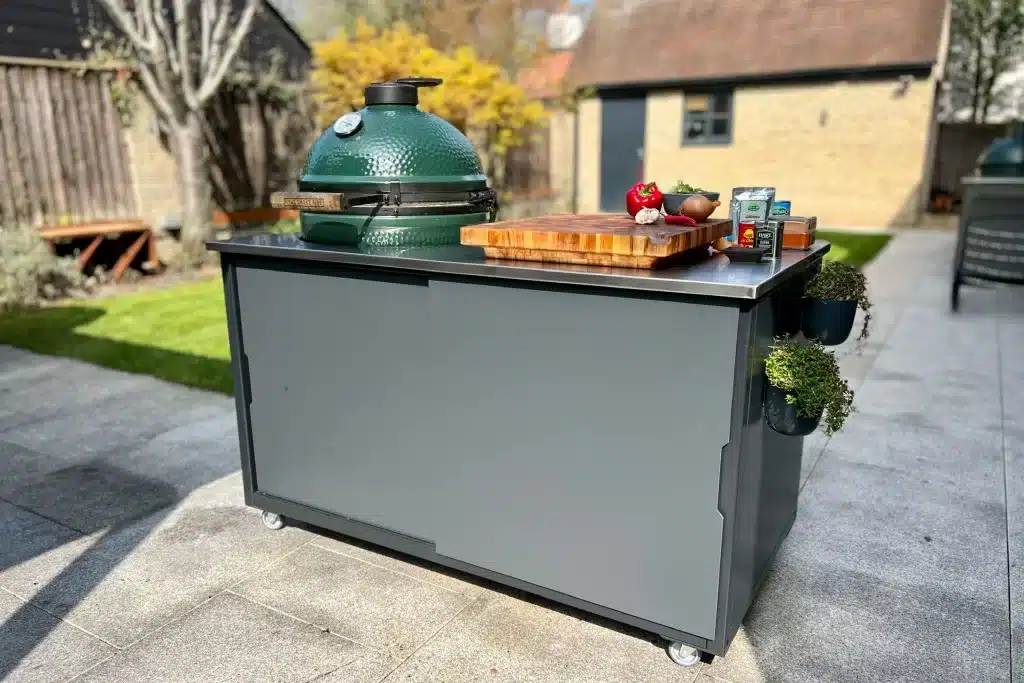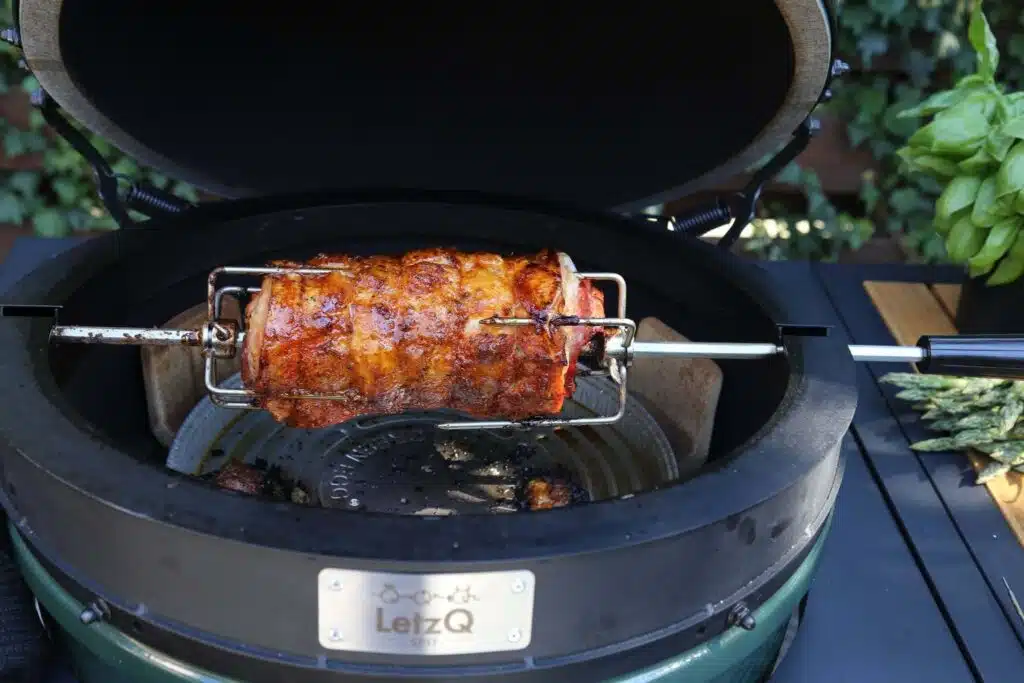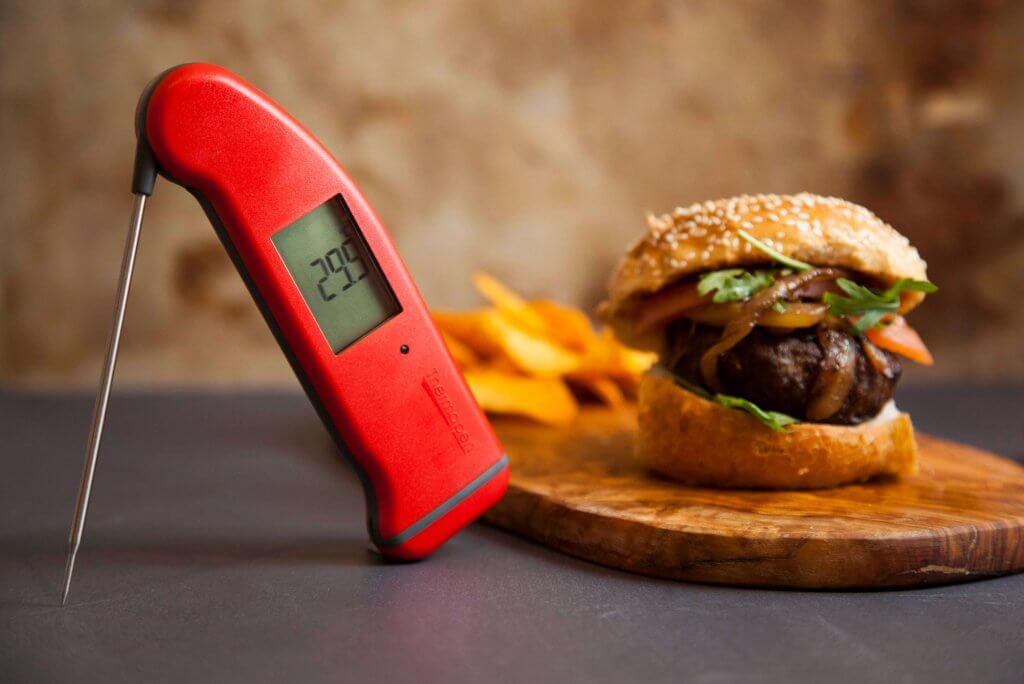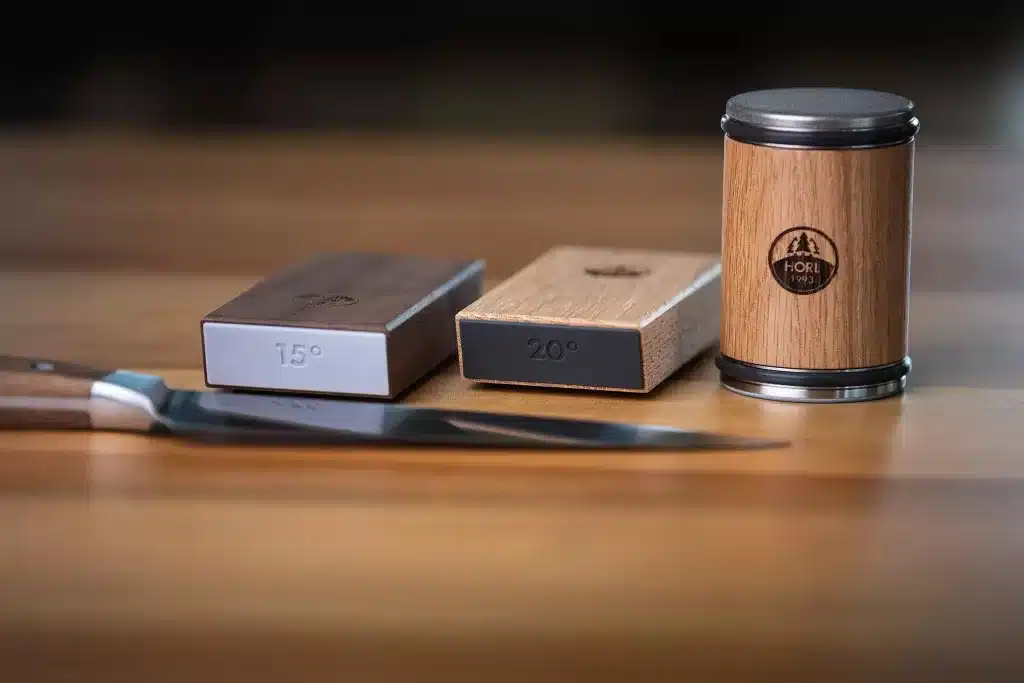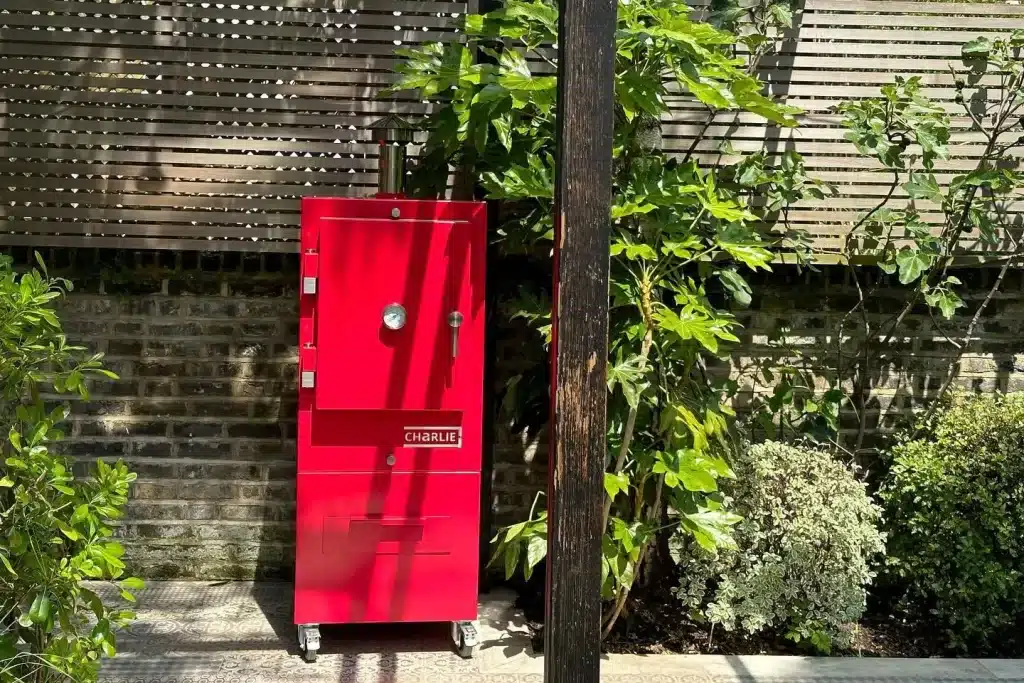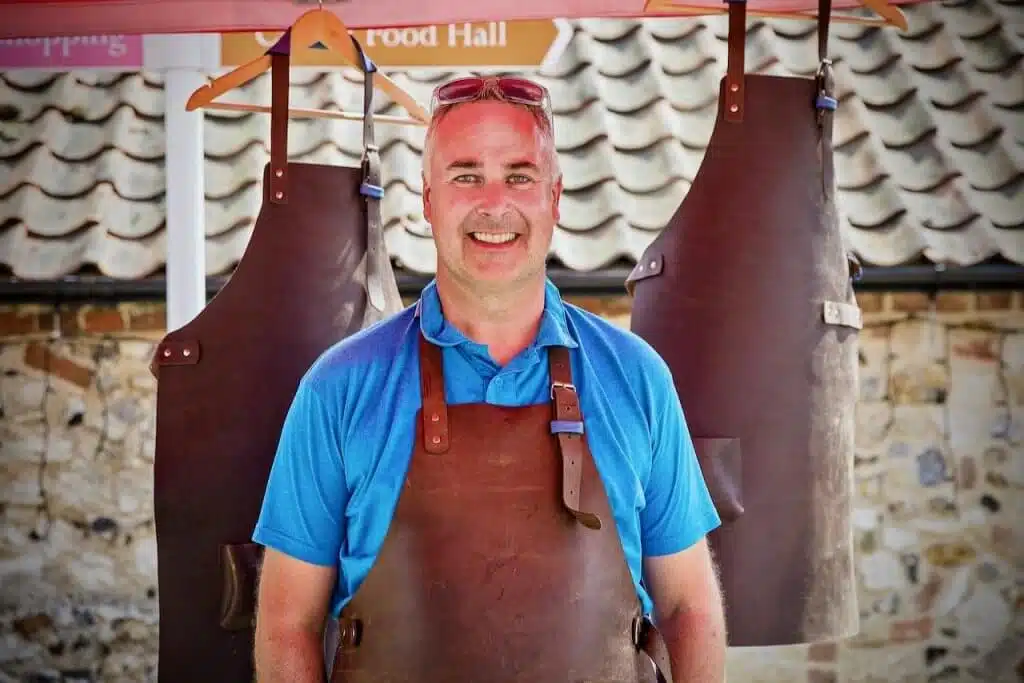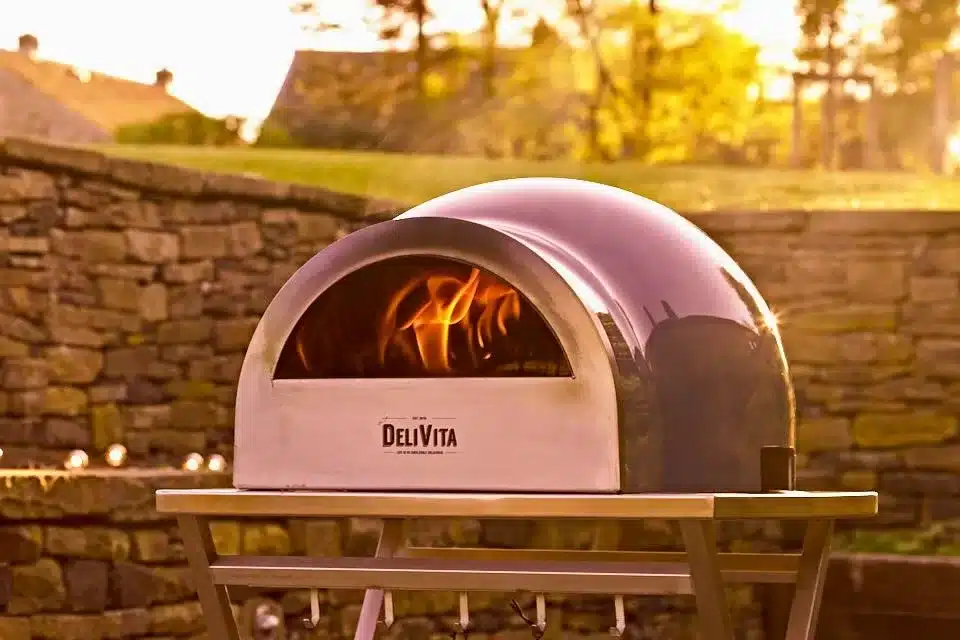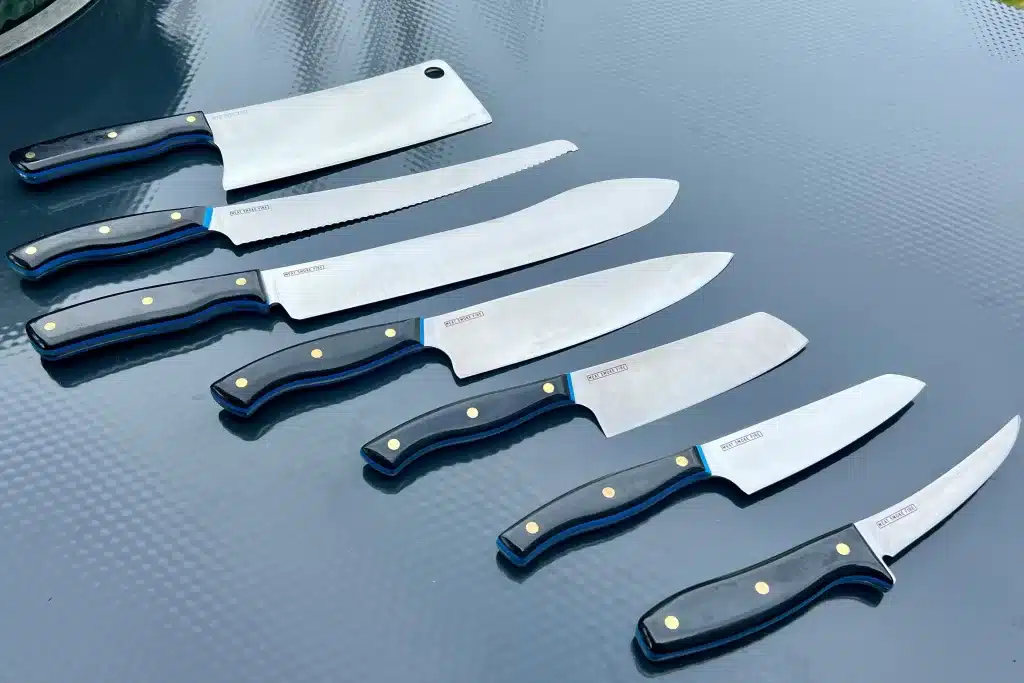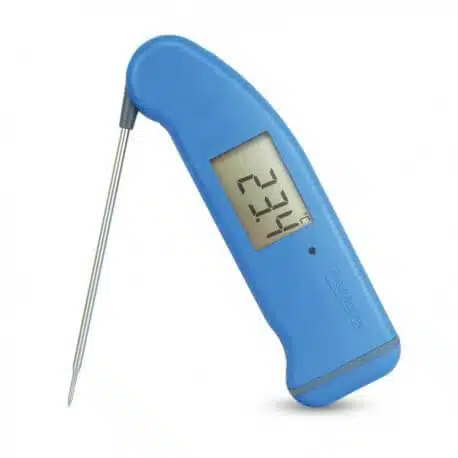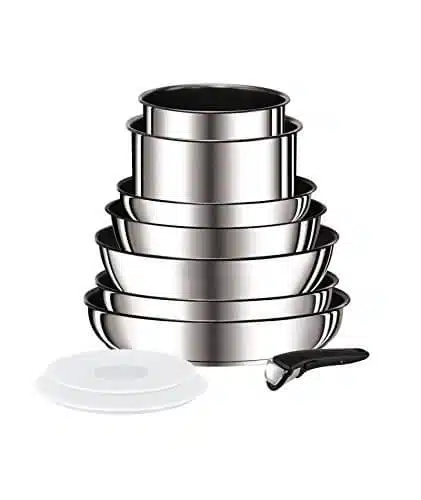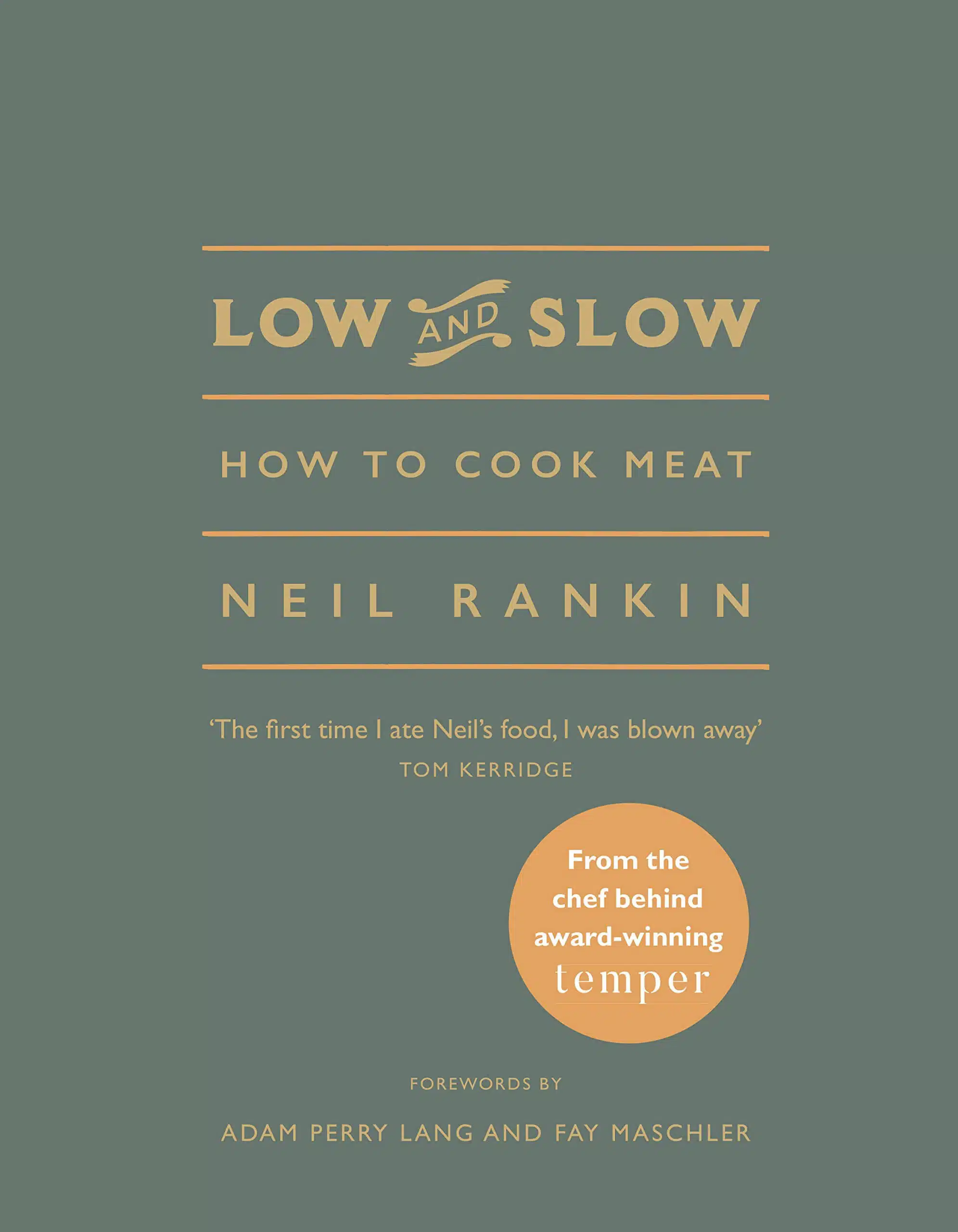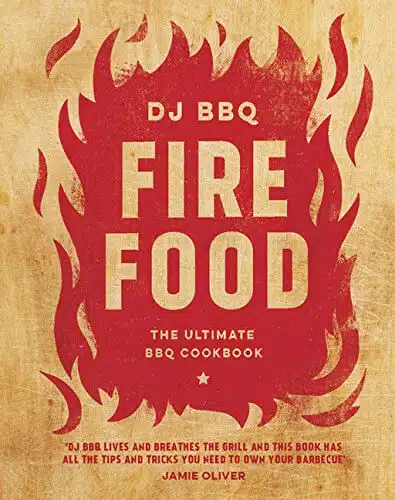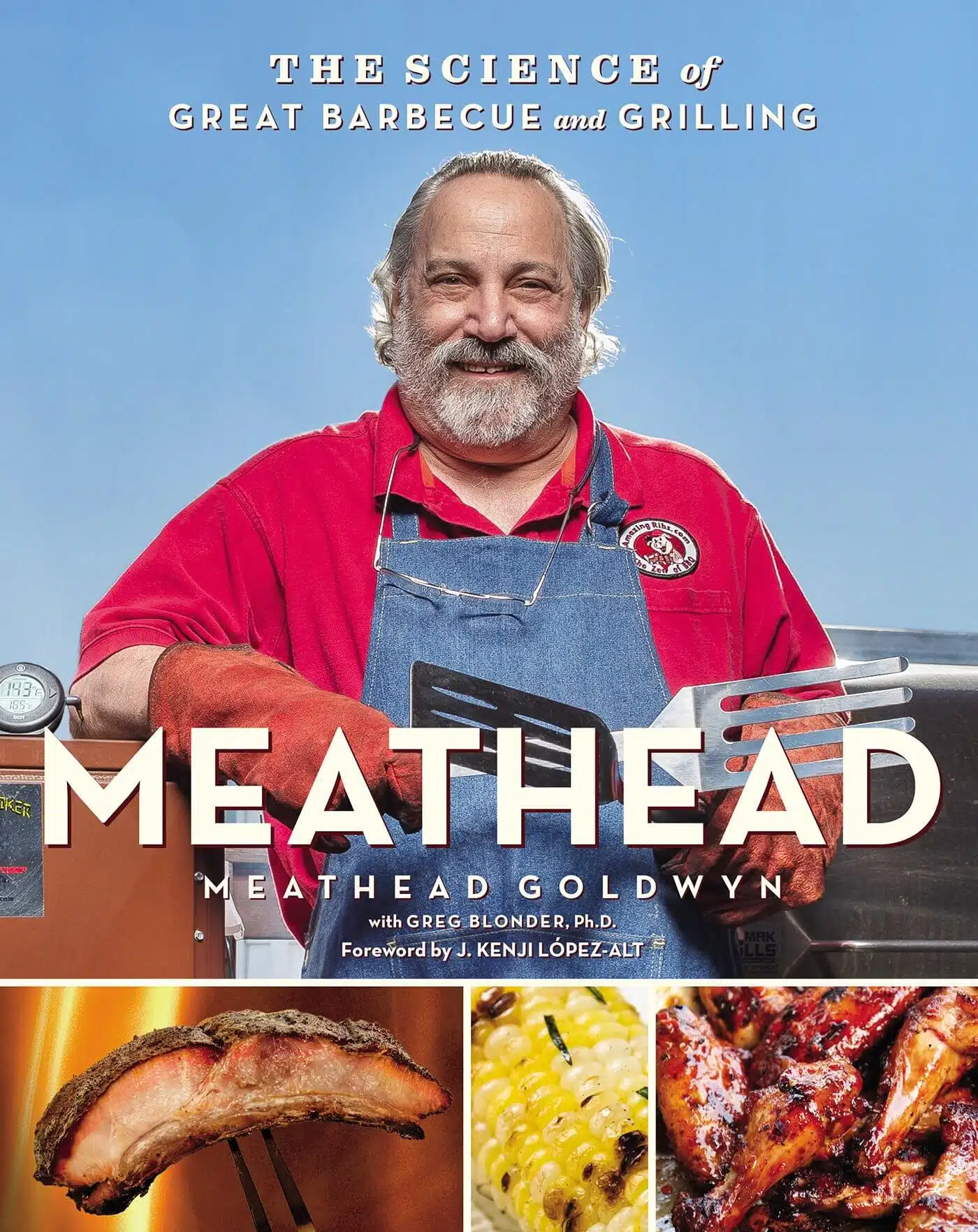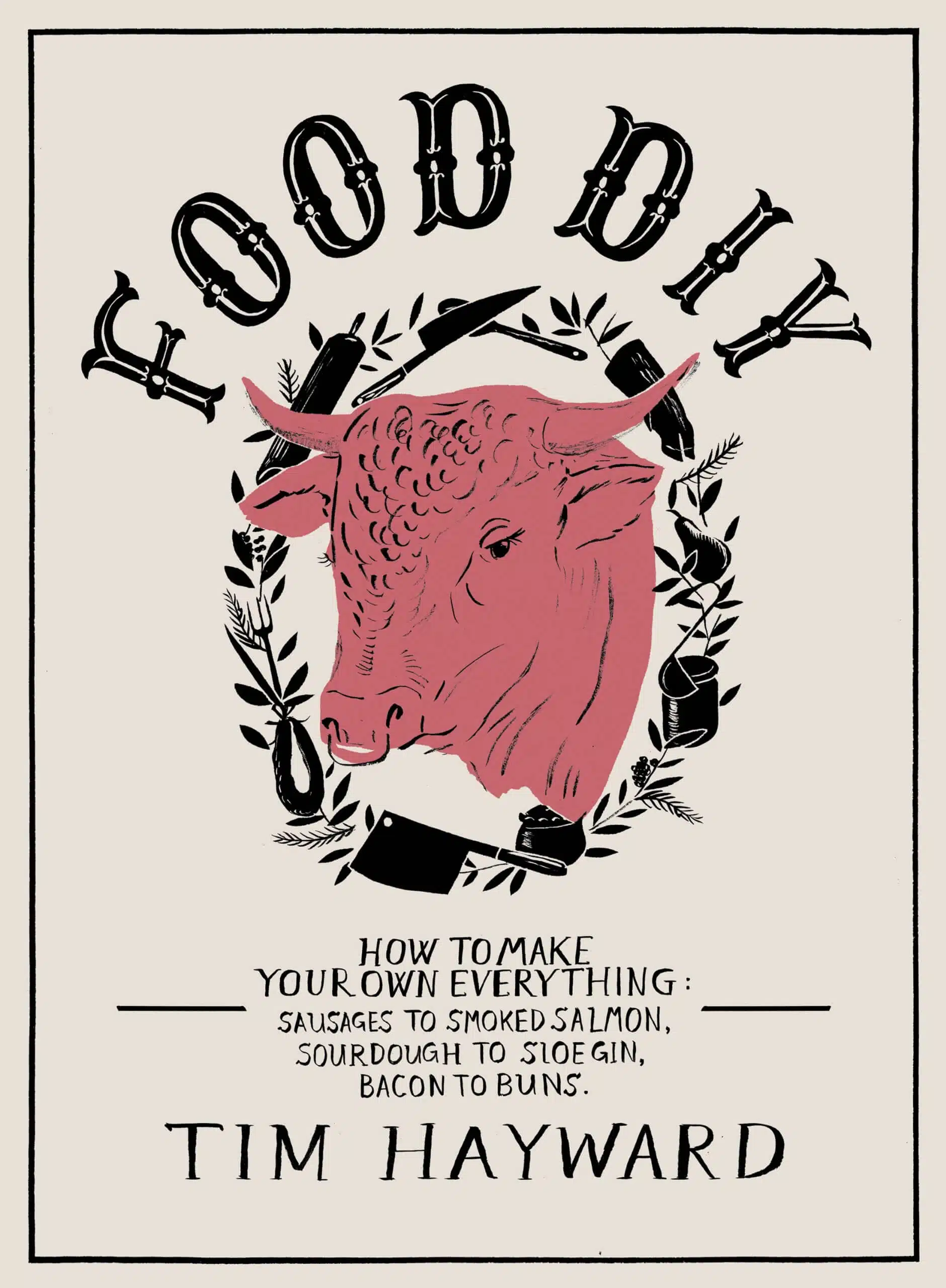
REVERSE SEARED PICANHA
The technique we used here was a reverse sear where we slowly raised the temperature of the whole piece of meat by cooking it at 110°C until its internal temperature was 48°C. We then fired up the BBQ to about 250°C and seared the outside of the picanha before resting it for about 15 minutes and serving in slices.
The initial cook was indirect, we used the plate setter feet up with the stainless grid on top. To that we added the meat and cooked slowly until the core temperature reached 48°C (5°C lower than the temperature we were aiming for as the last 5°C would be achieved when we seared the meat).
We then removed the plate setter and opened the air vents to raise the temp to 250°C. We used the stainless steel grid to sear the steak for about 3 minutes on each side. We then rested it for about 15 minutes before slicing and serving.

Dirty Steak vs. Seared rib-eye Vs. Pan Cooked Rib-Eye
The recipe is here for the dirty steak.
We fired up the MiniMax as well as your large in order to cook steak traditionally on the large, using a cast iron grid, and dirty directly on the coals of the MiniMax.
Cooking the steak dirty adds a really meaty flavour to the steak, especially when it has a big eye of fat. It’s also a little controversial when you have friends over. Very little ash sticks to the steak. I think it’s a great technique.
You can cook veg this way too. Daniel Clifford at Midsummer House in Cambridge cooks celeriac and beetroot directly on the coal, it’s divine. DJ BBQ does an amazing dirtly carrot recipe in his book Fire Food.

Cauliflower with Black Sesame and Truffle Oil Dressing
The recipe is here. The technique here was to cook on the back side of the plate setter. All I did was wipe down the back of the plate setter with a dry paper towel or foil. We set up the Egg to cook at 180-200°C with the plate setter feet down. I cut the cauliflower into about 7mm thick slices all the way through the cauliflower. I removed most of the really thick bit of stalk before cooking. I then added a touch of oil and some maldon salt to the slices (on both sides) and placed them directly onto the plate setter. We then cooked them for about 5 minutes on each side until they start to turn golden brown. To this we added the dressing. A great addition is to sprinkle toasted black sesame seeds to give a little crunch.
French Trimmed Rack of Lamb
This is a great recipe to do with the cauliflower as it also can be cooked on the back of the plate setter (or a ceramic plancha).
Again we setup the Egg in an indirect configuration with the plate setter feet down. We set the temperature of the Egg to 180-200°C.
I scored the fat of the lamb rack in a diagonal pattern with the scoring about 3/4 cm apart. I then added a tiny bit of oil and generously seasoned the lamb with maldon salt.
I then cooked this directly on the plate setter, fat side down for about 15-18 minutes. At the last minute, we turned the lamb to add a little bit of sear to the edges.
I used a Thermapen to probe the meat. For medium rare, we were looking for an internal temp of 58°C. The lamb will continue to cook while it’s resting so take it off about 5°C before (53°C for medium rare).
Always rest your meat wrapped in foil.

Focaccia
The recipe is here. This Italian bread is really simple to make and an easy first go at baking on the Egg. Make a batch of my basic bread recipe and let it rise. Knock it back and split into two portions. Push out each of these dough balls into the bottom of a 30cm x 20cm baking pan, lightly oil the top and cover with cling film. Put to one side to allow it to rise again. When ready, poke it with your fingers to make the dimples or just leave it rustic (my favourite). Drizzle generously with olive oil and sprinkle with salt and herbs (we used rosemary). Setup your Egg for an indirect cook with the plate setter feet up, stainless steel grid on top and the baking/pizza stone on top of that. Get your Egg to 220°C and give the baking stone a while to heat up, probably 20 mins.. Cook your focaccia in the tin on the baking stone for about 15 minutes until it’s both golden brown on the top, but also crunchy on the bottom. Allow it to cool on a wire rack before serving.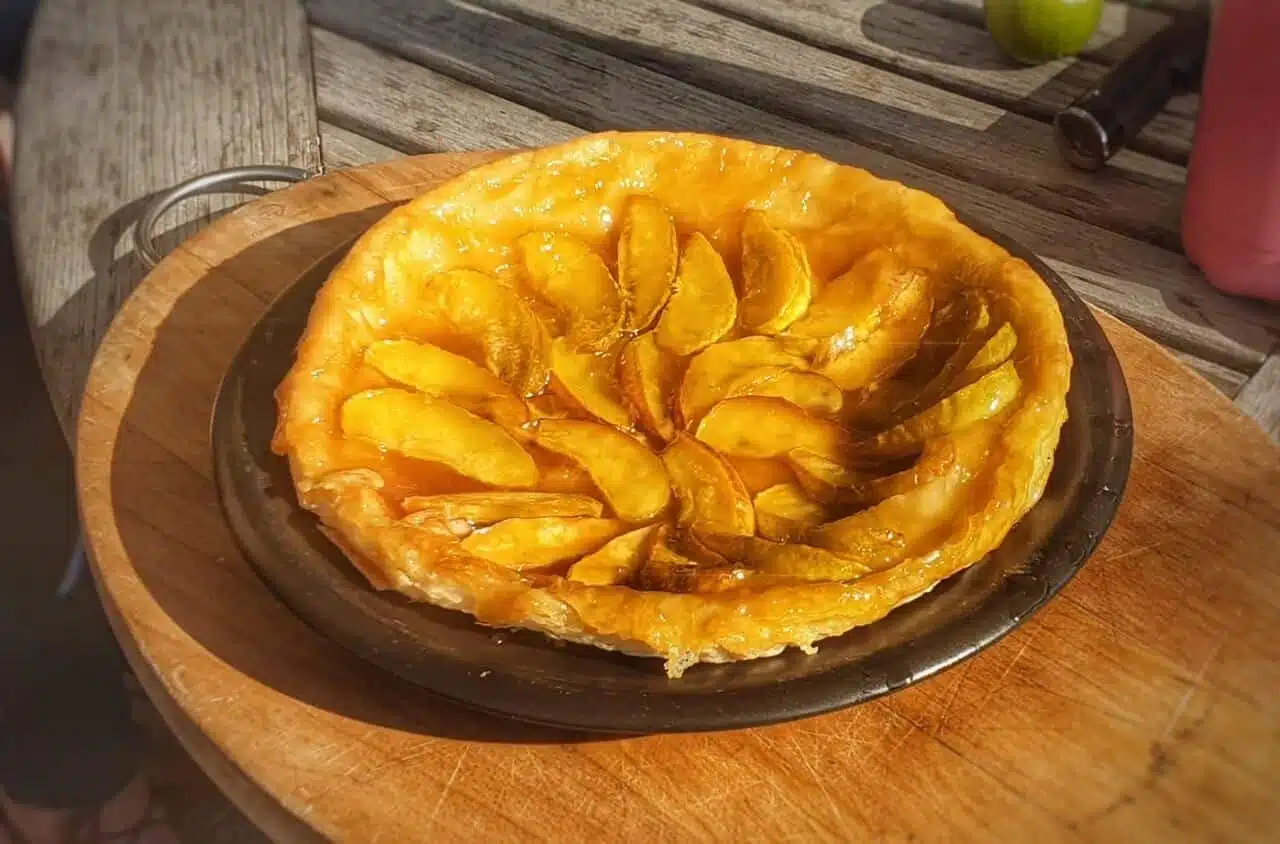
Apple Tarte Tatin
The recipe is here. This was our last cook of the day. We used one of the Tefal pans to make a caramel before addding the apples, butter and pastry. The caramel was cooked direct on the MiniMax, we then baked it (indirect) on the Large Egg. You could always do the first stage on the hob inside. Don’t stir the caramel, it’ll crystallise. Just leave it until the colour starts changing. Be careful with the flip at the end, hot caramel burns. Make sure you’re not under pressure with a big audience :-).Technique and Questions
How do I light my Egg?
- Top up the Egg with new charcoal to just above the line where the fire bowl and the fire ring meet.
- Create a small indentation in the centre of the charcoal and put in just one lit fire starter.
- Cover very loosely the fire starter with a few pieces of charcoal, you need to allow a good airflow.
- Leave the lid open and open the bottom draft door. Leave your Egg for 10 minutes to allow the middle of the charcoal to get going.
- After 10 minutes, close the Egg lid and open the cast iron top fully. Remember to position the screw towards you.
- Leave the Egg closed for about 5 minutes until it hits 180°C and has started warming the dome.
- You can now adjust your Egg to the temperature you want to cook at. See my temperature guide.
What temperature should I cook at?

Cooking temp guide from AmazingRibs.com
What settings are needed for specific temperatures?
How do I cook Ribs?
- 3 hours indirect
- 2 hours indirect but wrapped in foil with a small spritz of apple juice (1 tbsp per pack)
- 1 hour indirect
CURED MEATS AND THE PRO Q COLD SMOKE GENERATOR
THE BEST WAY TO SCORE PORK FAT
If you want to score your pork skin for crackling then the best tool to do this with is a retractable blade stanley knife. You can adjust how much of the blade is sticking out to adjust how deep you cut.
Always cut away from you. You might find it easier to cut from the centre of the skin to the edge. You can then turn the pork 180° and then score from the middle to the opposite edge.
wHICH CHARCOAL SHOULD I USE?
How do I use Chips and Chunks of wood?
When should I use Pepper?
Using Marinades and Sauces?
Making the best baked potatoes
The Stall or Plateau explained
Rest your meat
Reverse Sear
When you do a reverse sear as we did for the picanha, bring the temperature of the meat to 5°C less than you require it to be when finished. This is because the sear process will raise the temperature by another 5°C. For example, for a medium cooked joint you want it to be 63°C, therefore cook it until is has an internal temperature of 58°C before searing it.
Using Planks Multiple Times
- Lemon and lime – lovely citrus flavours go well with fish
- Beer, cider or lager
Using a cool box to rest meat
Cleaning your Egg
Rust on your Egg cast iron cap and searing grid
Great video resources on cleaning and using your Egg
While working at Big Green Egg I put together the tips series. They’re really worth a look.
Equipment
Probe Thermometer
Every BBQ chef should have a Thermapen 4. It’s by far the best probe thermometer on the market. It’s super accurate, fast reading and waterproof and has a backlit screen for use when it’s not so bright outside. You can buy it in my shop and I have set you up with a discount code to use at the checkout, CLASS10.Meater+
I used the block version of this during the class. Unfortunately it’s not going to launch until the summer. I love the Meater+ as its app will estimate when your meat will be cooked and tell you when to take it off your Egg so that it doesn’t overcook. I wouldn’t be without a Meater.
They are now available to buy in my store and I hold stock of these.
Pans with handles that clip on and off
They’re a product from Tefal that I picked up several years ago in France before I got into the Big Green Egg as they were perfect for the camper van. They’re called Tefal Ingenio and are available in the UK now from Amazon. The handle clips on and off easily so you pop the pan in the Egg and take the handle off. I use mine all the time. They’re great for cooking tarte tatin. Just be careful with non stick ones that you don’t get them too hot as the non-stick will start to break down.Recommended Cook Books
Low and Slow
Neil’s book and his restaurant Temper are worth a look. Neil will often do things very differently, like take meat out of the fridge and cook directly without bringing to room temp. It’s available on Amazon from this link.Fire Food
Written by DJ BBQ (Christian Stevenson). DJ BBQ does a lot of cooking with Jamie Oliver. There are some fabulous and easy recipes in here.
There is a whole section on dirty cooking (cooking directly on the charcoal). I have done the dirty carrots and can highly recommend them. The book was only published recently.
Meathead
This is by Meathead Goldwyn, the man behind the AmazingRibs.com website. It’s got some really good stuff on technique as a well as some good recipes. It’s available on Amazon from this link.
Food DIY
Tim Hayward is a Cambridge based food writer, restauranteur and chef. He’s judged on the BBQ scene. His book contain loads of great curing recipes as well as BBQ stuff. I really love it and use the recipes all the time. It’s available on Amazon from this link.
